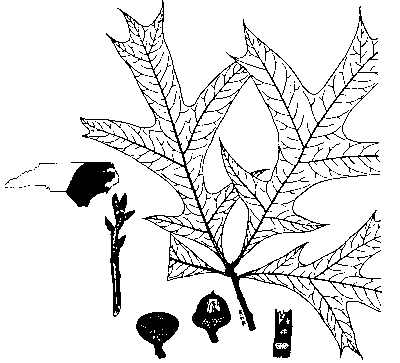|
Turkey
Oak
(Quercus
laevis Walt.)
|
|
| |
 |
|
| |
Turkey
oak commonly occurs in the understory of longleaf pine forests,
on infertile, sandy soils. Because of its small size, poor form
and rugged appearance on these sites, it frequently is considered
a "weed" tree.
The leaves are 5 to 10 inches long and 4 to 6 inches wide, usually
with five long, narrow, often curved, bristle -toothed and bristle-pointed
lobes. The upper surface is a shiny yellowish-green, while the
undersurface is paler and smooth except for tufts of red hairs
in the axis of the veins.
The acorns are about an inch long, ovoid, brown and wooly at the
top, with bowl-shaped, scaled cups enclosing about one-third of
the nut. The dark gray or blackish bark is irregularly fissured
and scaly.
The turkey oak is a small tree, usually not more than 20 to 30
feet in height and I to 2 feet in diameter. The crown is irregular
and rather open. The tree has little commercial value. The wood
is used locally for fuel and rough construction.
Turkey oak is easily "top-killed" by forest fire, but it sprouts
vigorously from its roots. The number of turkey oaks in the Sandhills
of North Carolina has gradually increased with an increase in
fire control. |
|
|

